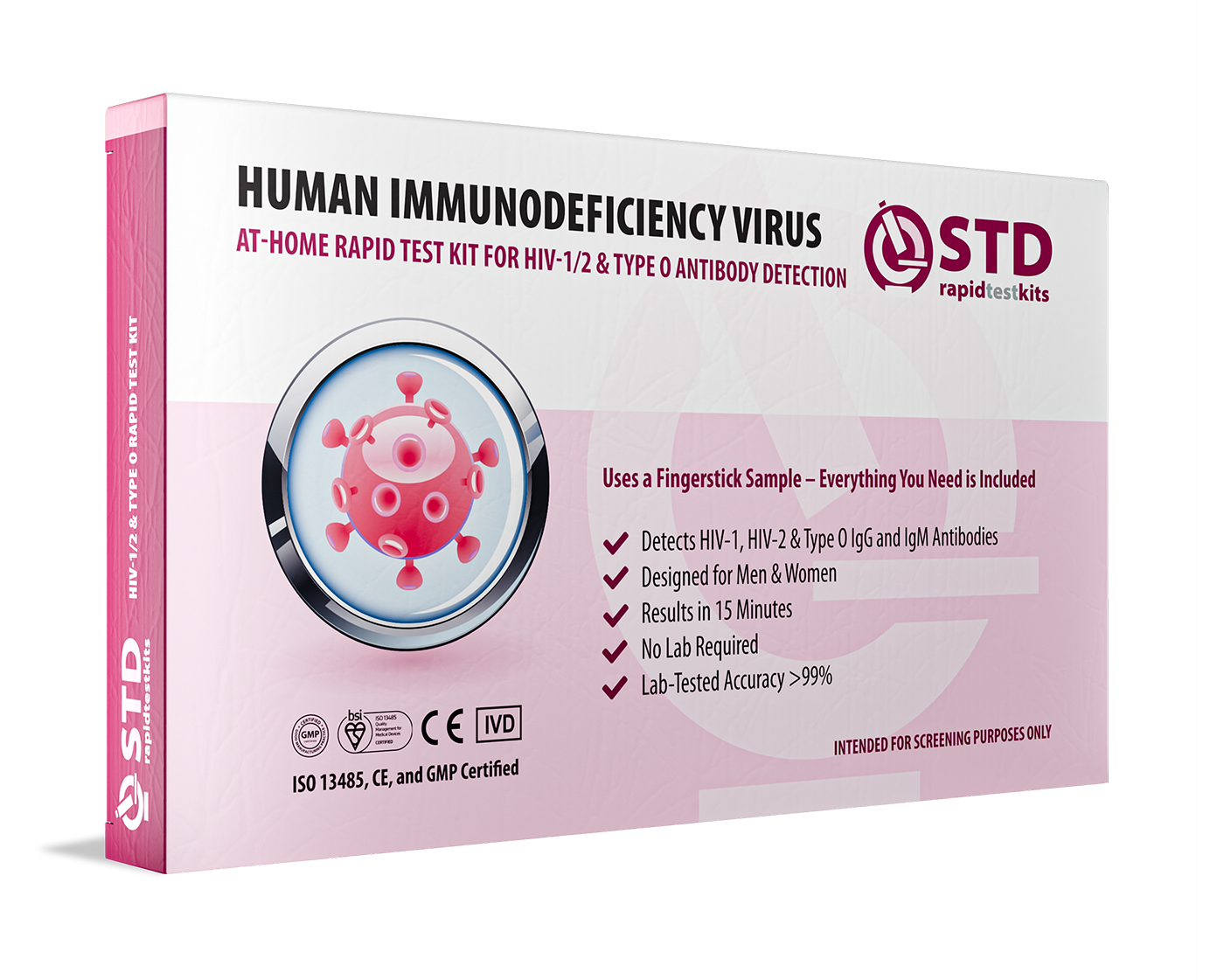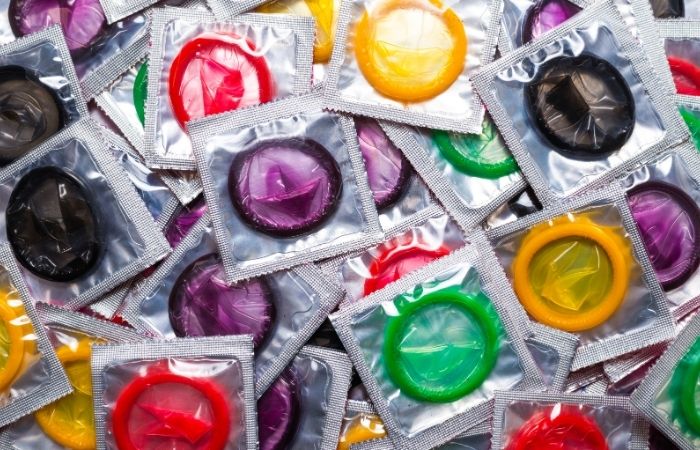Private and Accurate: How At-Home Test Kits Are Changing Sexual Health
The Connection Between STDs and HIV
There is a high behavioral and biological interrelation between HIV and sexually transmitted diseases. Various sexually transmitted diseases raise one's vulnerability to HIV, whereas HIV lowers the resisting power of an individual's immune system and makes the person more vulnerable to other infections and their complications. The key to prevention and early detection is based on our understanding of the above-mentioned interrelation.

How Sexually Transmitted Diseases Increase the Risk for HIV
Having an STD can increase an individual's vulnerability to HIV infection in several ways:
Inflammation and Immune Response
Many sexually transmitted diseases-including chlamydia, gonorrhea, and syphilis-are characterized by inflammation of the genitals or anus. An infection attracts immune cells, including CD4 cells-the very cells that HIV infects to replicate and spread throughout the body. This means that the risk of HIV transmission is heightened when an infected individual is exposed to other STDs, as the virus now has more cells to infect.
Wounds and Damage to the Mucosa
Sexually transmitted diseases (STDs) such as syphilis, herpes, and chancroid cause genital ulcers or open sores. Sexual intercourse can provide a portal of entry for HIV through breaks in the skin and mucous membranes. Inflammation or friction can create micro-tears, which allow the virus to penetrate.
Changes to the Human Vaginal and Rectal Microbiome
The bacterial flora of the vagina and rectum is very sensitive and serves to protect against infections. STDs can disrupt this microbiome, which then leaves these areas much more susceptible to irritation, bacterial overgrowth, inflammation, and the acquisition of HIV.
Increased Viral Load in HIV-Positive Individuals
If a person has HIV and also an STD, he is at risk of acquiring from his sexual partners. Some studies have shown that an HIV-positive person with another STD can have a two to five times increased risk in the transmission of the virus in vaginal secretions.
Order Now $33.99 $49.00 Check Your STD Status in Minutes
Test at Home with Remedium
HIV Rapid Test Kit




Behavioral and Social Factors Linking STDs and HIV
For non-biological reasons, there is a very strong connection between STDs and HIV.
Excessive Sexual Risk-Taking
Those who have one sexually transmitted disease are more likely to maintain their sexual practices that can lead to an infection with HIV. Examples include not always using condoms, having intercourse with different people, and having sex while drunk or high to a point where rational decision-making abilities are impaired.
Infections Go Undiagnosed Due to Lack of Symptoms
The unsettling thing about many STDs, including HIV, is that they often don't exhibit symptoms and thus go undiagnosed for long periods. It's unsettling to consider how syphilis, chlamydia, and gonorrhea all can be present for long spans yet unnoticed while causing irreparable harm.
Harassment and Obstacles to Testing
Due to myth, stigma, and a lack of access to health care, people avoid testing. Transmission cycles go through their progressive process partly due to the inability or unwillingness to act in less thancare-seeking behavior on the part of individuals who remain unaware that they have an STD or HIV.
Disparities in Population Characteristics and Health Insurance Access
Socioeconomic factors coupled with poor access to health care and social injustice predispose some populations more than others to STDs and HIV. Communities where sexually transmitted diseases are more prevalent have been shown to have higher rates of HIV infection, which indicates the need for sexual health programs to include dual testing.

The Case for Dual Testing
Medical professionals support dual testing, or the testing for both HIV and sexually transmitted diseases, simultaneously, because of the undeniable relationship between the two. Preventative screenings have several benefits:
- Reduce the risk of transmission by detecting the disease at an early stage and providing timely treatment.
- Reduce the risk of transmitting HIV infection by preventing the complications that could arise from sexually transmitted diseases.
- Allow high-risk HIV-negative individuals the opportunity to become informed about effective prevention methods such as PrEP and to be counseled and educated about the option.
Easy-to-use, discreet home test kits for sexually transmitted diseases and HIV make proactive health care more accessible for many.
This educates individuals and couples on the safe ways to protect themselves and others from sexually transmitted diseases or HIV through clear behavioral and biologic connections between the two.
Benefits of Taking a Dual Test
The facilitation of early treatment through testing reduces the chances of serious health complications since these infections are usually caught earlier in the disease process, hence easy management.
- Early detection of infection helps prevent the spread of sexually transmitted diseases (STDs) and HIV to sexual partners.
- Healthier Communities: Routine dual testing reinforces broader community-wide prevention efforts to reduce infection rates.
- Taking Care of One's Own Health: Knowing one's own STD and HIV status enables individuals to make informed decisions about their health and relationships.
Order Now $129.00 $343.00 Check Your STD Status in Minutes
Test at Home with Remedium
7-in-1 STD Test Kit




For all 7 tests
Co-infection: Risks and Challenges
- Risk of Mother-to-Child Transmission of HIV Enhanced: When sexually transmitted disease infection causes some bodily changes in a person; these changes heighten the probability of mother to child transmission.
- Other Health Concerns: Presence of STD infection and HIV makes a person further vulnerable to fatal health consequences because it accelerates the course of the disease. Symptoms are minimal or nil that is why many people delay being tested and getting treatment for an STD and the human immunodeficiency virus disease.
One of the main reasons for continuous transmission of the diseases due to stigma and other testing barriers is that the fear of judgment keeps many individuals from getting themselves tested.
Conclusion and Recommendations
Testing for STDs and HIV periodic is recommended by public health professionals, especially the one who have sex frequently.
- Affordable, Easy, and Accessible Testing Kits from Home: These facilitate testing within the comfort of one's home devoid of any inhibitions due to shame.
- Public Education Campaigns: Public health programs should continually educate the public on the correlation between sexually transmitted infections and HIV.
- Prevention of Sexually Transmitted Infections through Safer Sex: Use of condoms, reduction of sexual partners, and open communication regarding sexual matters are some of the ways.

Statistics And Facts
- Persons with history of sexually transmitted diseases have two- to fivefold increased risk of acquiring HIV as compared to persons without sexually transmitted disease.
- According to an article published in The Lancet, about 30% of new HIV infections are attributed to persons with previously diagnosed STDs.
- The Centers for Disease Control and Prevention said early diagnosis as well as effective treatment of these infections with dual testing will result in decreasing the rates of transmission of Human Immune Deficiency Virus.
Expert Opinions and Real-Life Examples
Doctors believe testing for sexually transmitted diseases and HIV should be a routine part of patient care.
"Addressing both STDs and HIV together allows for more effective action toward reducing transmission rates and improving patient outcomes," said Dr. Emily Carter, an infectious disease specialist. Generally speaking, where dual testing is common, there is less infection. Case studies show this.
Background Information
Efforts to prevent HIV and sexually transmitted diseases were once fragmented since the two were considered different health issues. Healthcare providers recommended dual testing as the medical research progressed and the association between these infections became more apparent. Another factor that has shifted people's thinking about sexual health is the availability of quick and at-home testing.
Order Now $119.00 $294.00 Check Your STD Status in Minutes
Test at Home with Remedium
6-in-1 STD Test Kit




For all 6 tests
Trends to Watch in the Future
In the future, STDs and HIV testing will be made easier due to advancements in quick testing and mobile health clinics. Public health campaigns aimed at making testing a norm to reduce stigma and encourage people to get themselves tested regularly, are being aggressively pursued by various public health bodies. Real World Application
One easy and direct way that people can be aware of their health status is by taking a home test for STDs and HIV. Incorporating tests into routine examinations enables doctors and other healthcare providers to identify additional patients who should receive early diagnosis and treatment.
Impact on Industry
Constant innovation characterizes the healthcare business due to the demand for more accessible means of testing solutions. Due to an uprising of telemedicine, there are testing kits that can be delivered to one's house and allow the person to consult with the doctors remotely. This shift has bridged sexual health treatments to become more approachable and inclusive.
Prevalent Myths
- Myth: Testing is necessary only for those who have a high risk for diseases.
- The fact is that regardless of risk factors, sexually active people should consider getting tested periodically.
- Myth: One does not need to get tested if he or she does not have any symptoms.
- A fact is that most sexually transmitted diseases, including HIV, can remain asymptomatic for a pretty long period of time.
- Myth: Home tests for HIV and STDs do not work.
- Testing at home has become more sophisticated, and health groups have recognized the reliability and validity of the new tests.

FAQs
1.- How often should I get tested for HIV/STD?
If you are engaging in high-risk activities, you should test more frequently, but at least once a year is a good place to start.
2.- Are there any ways for STDs to dissolve without doctor interaction?
While some sexually transmitted diseases (STDs) may go away on their own, treatments are necessary for many others to avoid problems.
3.- Is the accuracy of home testing kits comparable to that of lab tests?
Assuming proper usage, the majority of at-home tests that have been approved by the FDA do indeed produce valid findings.
4.- If my HIV or STD test comes back positive, what are my options?
See a doctor to determine the most appropriate course of action .
5.- Will the use of condoms mean that a person cannot catch HIV or any other sexual infection?
No, even though they are very effective their protection is never absolute.
6.- Will the risk of acquiring HIV increase with the increase in certain forms of STDs?
Yes. It has been recorded that the sexually transmitted diseases like syphilis, gonorrhea, and herpes, can be used to make one susceptible to HIV.
7.- Does that mean I can test anonymously and no one will know who I am?
You can test anonymously at many clinics and with at-home tests.
8.- Does it cost a lot to test for both?
There are several public health programs that offer testing for sexually transmitted diseases and HIV at no cost or low cost.
9.- How long will it take to get my test results?
The turnaround time for most rapid testing ranges from minutes to days.
10.- If I test positive, should I inform my partner?
Yes, telling one's partner obviates the virus's chances of being passed on and presents an avenue to get tested too.
Final Comments
Protecting public health as well as one's own individual health requires having an understanding between the relations that exist between STDs and HIV. The most effective and easy way of preventing the spread of diseases and ensuring timely treatment is to get dual testing regularly.
Testing for HIV or STDs from an at-home test kit is an easy, discreet, and private way to keep track of your sexual health. Individuals will not only improve their health but also contribute to the well-being of the community around them by keeping testing and education a priority.
Sources
1.- Centers for Disease Control and Prevention (CDC)
2.- World Health Organization (WHO)
3.- National Institutes of Health (NIH)
4.- Mayo Clinic










